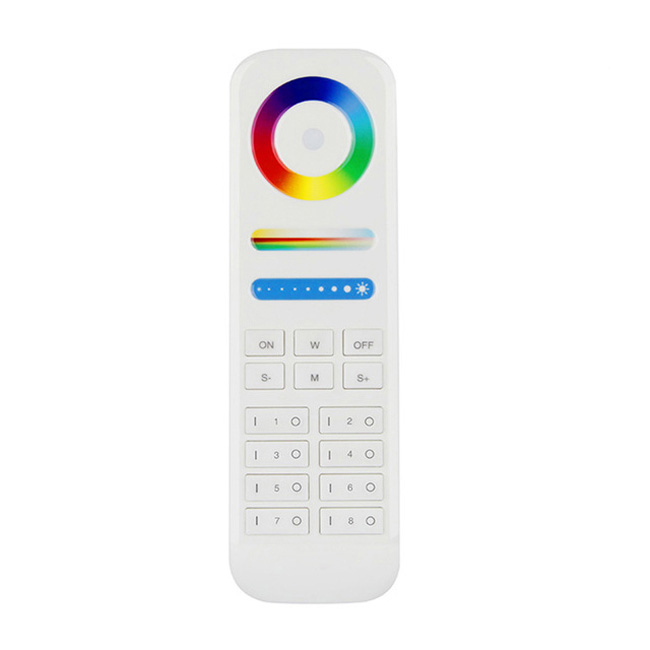 RF LED controllerRF LED controller is one of the most popular remote controls that are used to control single color, RGB LED strip lights and other devices. The control signal can pass through obstacles such as walls, and the control distance is as long as about 100 ft (30 m). RF wireless remote uses radio frequency, mostly 2.4G, to transmit signals to the RF LED receiver/controller. It does not need to have line of sight between the remote and the controller, and does not require the remote to point to the controller. Useful knowledge article: What are the differences of differenet type LED controllers?
Common RF LED controllers use rotary knobs, touch panel, touch sensitive color wheel, touch buttons to input signals. RF 2.4G multi channel remote is used for multi-zone controllers. The RF LED controllers we choose have high-precision pairing and transmission features, including absolute frequency accuracy or relative frequency accuracy. The circuit board and IC of the components are highly resistant to interference, so the RF controllers won't interfere with other Bluetooth devices nearby. RF LED controllers are categorized to the following types based on their application with LED strip lights(Top nine considerations before buying LED strip lights).
RF wireless remote LED controllerAmong the three commonly used controllers of RF, WiFi, and Bluetooth, the RF LED controller is the most effective controller for LED strip lighting if the wireless control distance is considered. RF LED controller usually has a control range of 100ft. This control distance is generally sufficient for use in various projects, which is why RF wireless controllers are one of the most popular controllers.
Recommended Reading: How to install RF RGB LED controller?1. Pair RF RGB LED controllersWhen shipped from the factory, the RF LED controller kit typically includes a receiver controller and a remote that are already paired with each other. For the case of purchasing one remote and multiple controllers, if the manufacturer has not done so, you need to pair the remote with the controllers before use, otherwise the remote and the controllers cannot connect or communicate. Usually the pairing process is done by pressing several keys in certain order. The manual that comes with the RF RGB LED controller should have the detailed instruction on how to pair remote with receiver controller. 2. How to install the RF wireless RGB controllerThere are many methods to install RF wireless LED controllers, depending on the type of RF controllers. They are usually wall mounted, or just work a separate remote. The traditional wall mount method requires a mounting base or junction box on the wall and then use screws to secure the controller to the base. This base needs to be installed in a hole on the wall in advance. 3. RF RGB LED controller installation combination.The installation combination is flexible. You can pair one RF RGB LED controller with one remote, or you can pair multiple RF LED controllers with one remote. The flexibly of combining remote and controllers depends on how many light strips are controlled, the location where each light strip is installed, and the like. Of course, the combination is about different ways of how to install the RF LED controller. It is not about right or wrong. The basic installation considerations are the following.
Recommended Reading: Install LED strip lights with controllers. |



